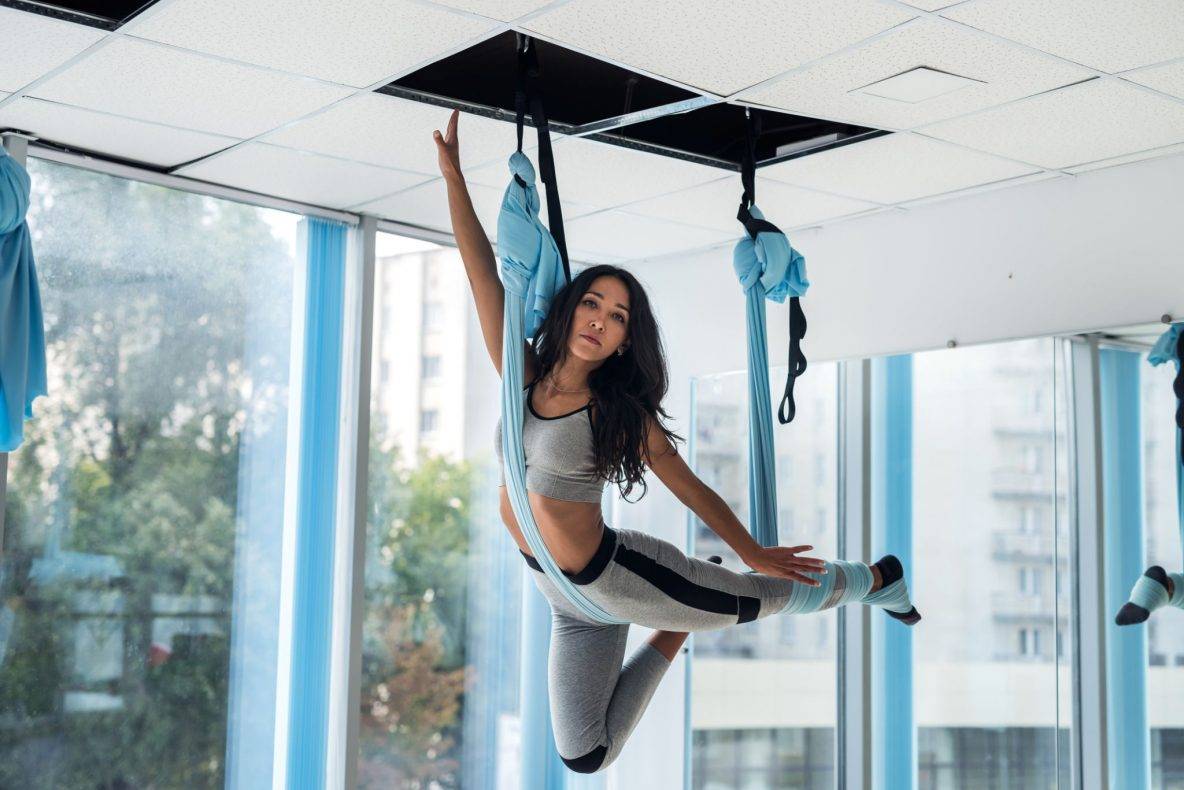The reason everyone should try Aerial Yoga is because it’s good for your body and your mind.
There are a lot of different types of workouts you can do, but can you say the same about aerial fitness? Aerial fitness is just as Instagrammable as the other wellness crazes, but few people can say they’ve tried it. You know what? We do, too. People think it’s almost impossible to hang upside down, but it isn’t that hard! (not to mention scary). The benefits of going outside your comfort zone make it worth the risk.
THE EXPERT WILL MEET YOU.
There is a company called AntiGravity that is the best at making people do aerial yoga. Josie Say is a master instructor trainer at AntiGravity.
Mindbody has a yoga and meditation guide and holistic wellness expert named Christa Quattrocchi. She works there.
You can read on to find out how aerial fitness can help your health and mood.
In what way is Aerial Yoga different from other types of yoga?
Aerial Yoga is a type of yoga that is done in the
You don’t have to lay on a mat on the ground when you do aerial fitness, which is also called aerial hammock or aerial yoga. Instead, you do it in a silk hammock that’s hanging from a ceiling. It’s usually a mix of yoga, Pilates, dance, and more, which is why most instructors call it “aerial fitness” or “aerial hammock” instead of “aerial yoga.”
Aerial fitness isn’t like traditional yoga, which only focuses on yoga. It also includes elements of other exercises, all while trying to defy gravity. Say: “Based on the teacher’s background and education, there may be more emphasis on certain elements and the choice of apparatus.” This is how it works: (AntiGravity Fitness was started by Christopher Harrison in New York City in 1991. His teachings are respected around the world).
Because aerial fitness focuses on moves in the air, that doesn’t mean there isn’t any floor work. She says that some of the aerial fitness lessons show you how to use both your aerial fitness equipment and the ground. However, some more advanced classes require that you climb up and stay in the air like you would in an aerial arts show.
How Aerial Fitness Helps You
Deepens the stretches
Relieves joint and spinal pressure that floor workouts can cause.
Releases stress and improves balance and proprioception (body awareness). Strengthens the core.
Improves breath awareness. It’s easier to get into inverted postures.
When you feel good, endorphins come out.
Aerial fitness has a lot of advantages, as you can see from this text.
1 While all of these things can be good additions to your daily routine, hanging in the air gives you a sense of safety that can’t be matched.
Quattrocchi: “Some people say they feel like they’re in a cocoon, which can be very comforting when they’re trying to heal from trauma.”
In the air, you can do aerobics.
What to Expect When You Take an Aerial Fitness Class
You might think that flips and inversions are at the top of the list. Quattrocchi says that before even talking about specific moves, you should expect to face your fears and learn to trust. It will keep you safe, she says.
If you don’t have a lot of experience with aerial fitness, Say says that what to expect comes down to what kind of class you take. Aerial fitness classes can be anything from slow-flowing, meditative, restorative, and body-mind-spirit-centered to a kind of suspension fitness, where you use the apparatus to gain flexibility, strength, mobility, and agility in preparation for gymnastics and aerial arts-influenced flips and tricks, depending on the brand, teacher, and class emphasis. It’s always a good idea to address dizziness issues for your own safety.
How Aerial Yoga is different from traditional yoga.
Quattrocchi says that aerial yoga is a good addition to traditional yoga. “Both of them have their own advantages, but aerial yoga might be better for people who have joint or spinal pain,” says the instructor. She says that by using a silk hammock as a prop, you can get deeper into postures that would be difficult to reach on your own. This, in a sense, means that even though people think that aerial fitness is hard because you’re suspended, it can actually help you become more flexible and move more easily when you do traditional yoga.
As long as you sign up for a class, you can expect your teacher to help you through each step. People will be able to tell in the days to come that you worked out. In many positions, Quattrocchi says, “the abdomen needs to be active to keep balance and alignment.” “The best part is that your attention will be so focused on finding the pose that you won’t even notice all the fire in your center.”
At home, you can do some Aerial Fitness moves.
First, let’s be clear: A home aerial yoga practice can be very dangerous if you don’t have the right hammock set up for it to work. To make sure you don’t fall or get hurt, always have someone nearby. And if you get hurt while doing the moves, stop right away and get medical help right away.
With that in mind, there are a few ways you can try at-home aerial fitness.
As long as you have a hammock or silks, this is a good idea
If the ceiling is high enough and there is enough space around you, you can do most basic aerial fitness moves, like hanging upside down. However, before you put your trust in your hammock, write down two things to keep in mind:
The first thing you should do is check your equipment. You should always hire a professional to inspect and install equipment on things like beams and ceilings. It’s important for students to do research before buying a free-standing structure. They should look for safe, well-known companies instead of the cheapest ones. These small parts, like carabiners and daisy chains, are what connect all of them. Also, when it comes to the equipment itself, buy equipment that has been tested. A hammock that costs $329 can hold more than 1,000 pounds. If you look for information about or photos of aerial yoga, you might see people doing it on silks that are attached to trees, like in this picture. This is not safe, because there’s no way to know how strong that branch is. There is only one way to do this safely, and that is to hire a pro.
- Make sure that you know all the moves. It’s always a good idea to learn how to do this correctly before you do it on your own. The equipment isn’t just a thing to use as a prop. It is often that you hold your whole body in space.
In the event that you don’t have a hammock or silks, you can still have a good time!
Use a yoga strap instead of the silk hammock to get deeper into postures like floor bow, dancer’s pose, and reclined pigeon.
The last thing you’ll learn is:
It doesn’t matter if you do aerial fitness in a studio or if you improve your skills so that you can do it at home. The benefits of the practice are worth it.


